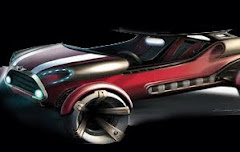In addition, the new headlights revert to the original bug-eye design, drifting from the teardrop scheme of the 996. Its interior is also similarly revised, with strong links to the earlier 911 interiors while at the same time looking fresh and modern. The 997 shares less than a third of its parts with the outgoing 996, but is still technically very similar to it.
Initially, two versions of the 997 were introduced— the rear wheel drive Carrera and Carrera S. While the base 997 Carrera produced 325 PS (239 kW) from its 3.6 L Flat 6, a more powerful 3.8 L 355 PS (261 kW) Flat 6 powers the Carrera S. Besides a more powerful engine, the Carrera S also comes standard with 19 inch (48 cm) “Lobster Fork” style wheels, more powerful and larger brakes (with red calipers), a more sporty suspension, complete with PASM (Porsche Active Suspension Management) which allows for electronic adjustability of suspension settings, Xenon Headlamps, and Sport Steering wheel.
In late 2005, Porsche announced the all wheel drive versions to the 997 lineup. Carrera 4 models (both Carrera 4 and Carrera 4S) were announced as 2006 models. Both Carrera 4 models are wider than their rear wheel drive counterparts by 1.26 inches (32 mm) to cover wider rear tires. 0–60 mph (97 km/h) for a base Carrera 4 with the 325 PS (239 kW; 321 hp) engine was reported at 4.5 seconds according to Edmunds.com. The 0–100 km/h (62 mph) acceleration for the Carrera S with the 355 PS (261 kW; 350 hp) was noted to be as fast as 4.2 seconds in a recentMotor Trend comparison, and Road & Track has timed it at 3.8 seconds. The 997 lineup includes both 2 and 4 wheel drive variants, named Carrera 2 and Carrera 4 respectively. The Targas (4 and 4S), released in November 2006, are 4-wheel drive versions that divide the difference between the coupes and the cabriolets with their dual, sliding glass tops.
2012 Porsche 911 Speedster
0







